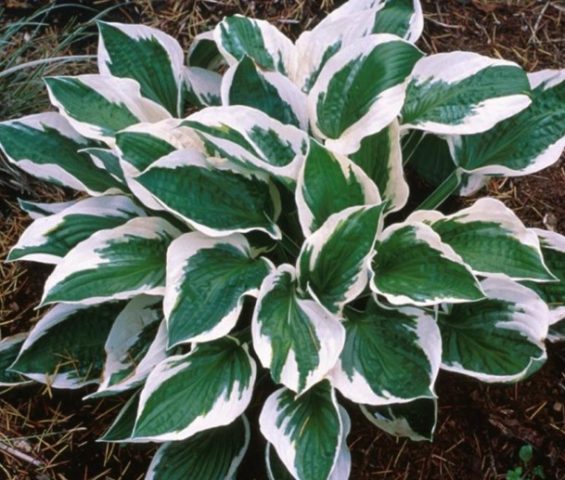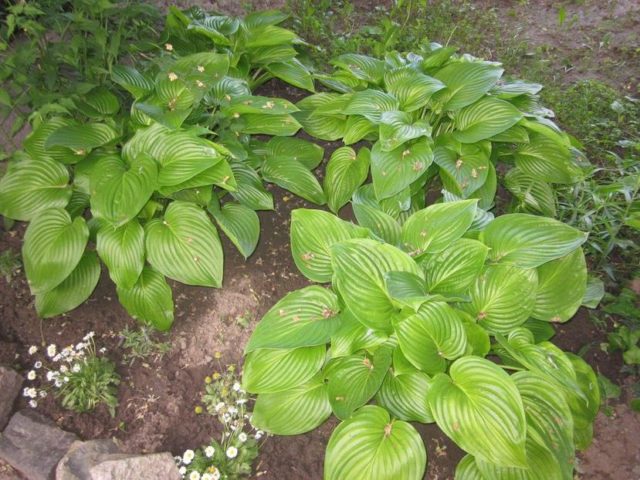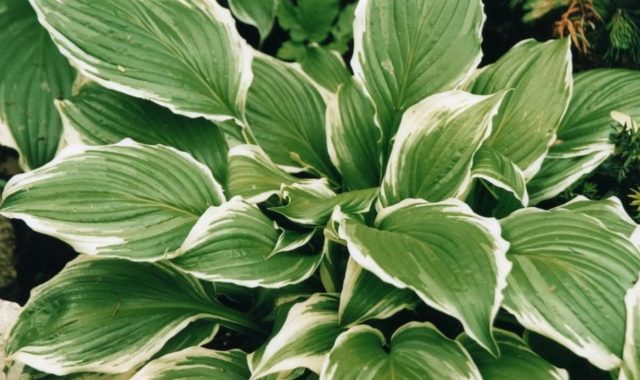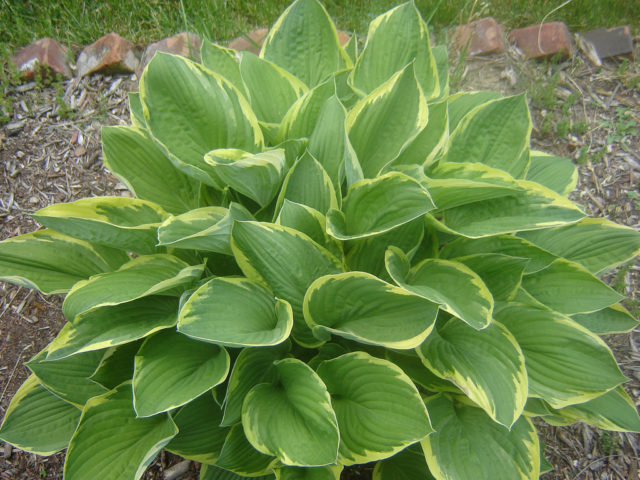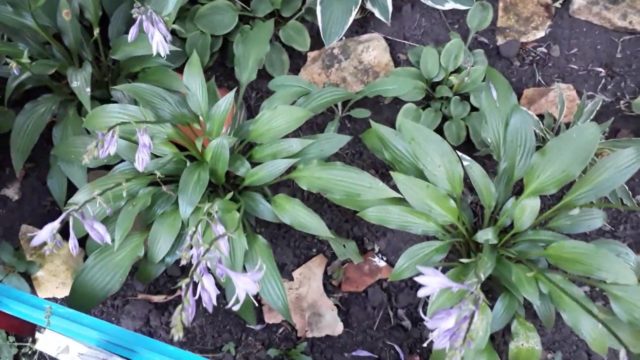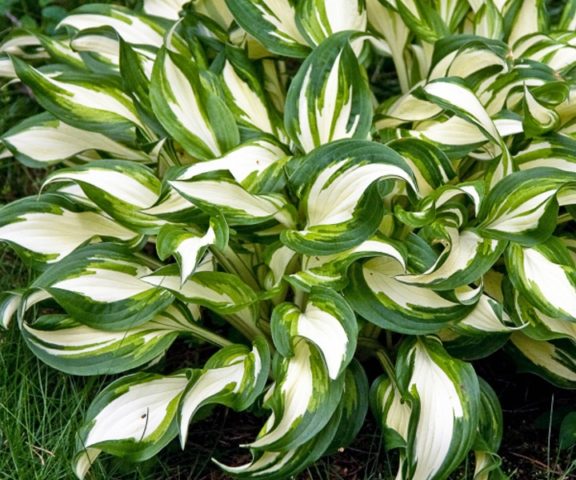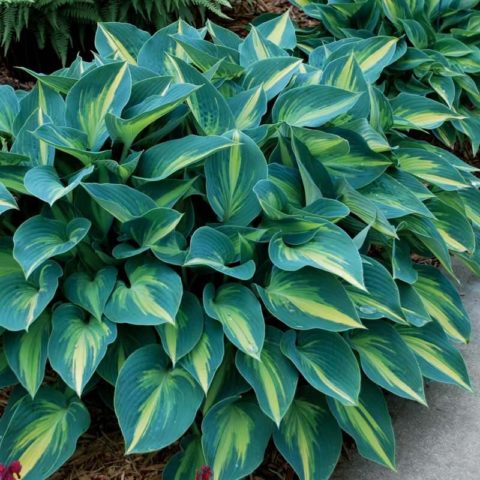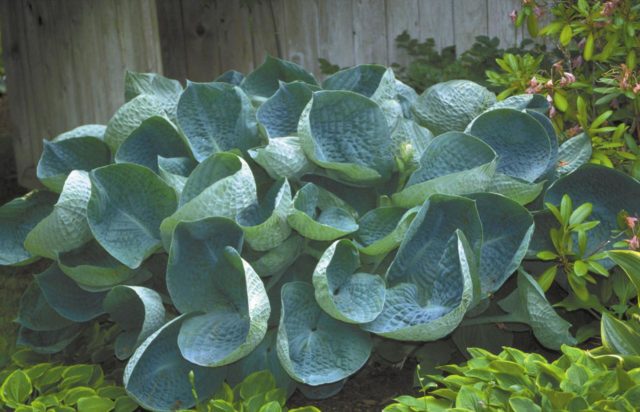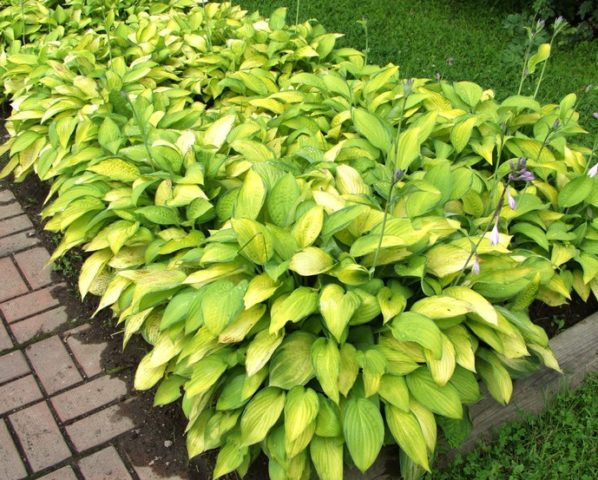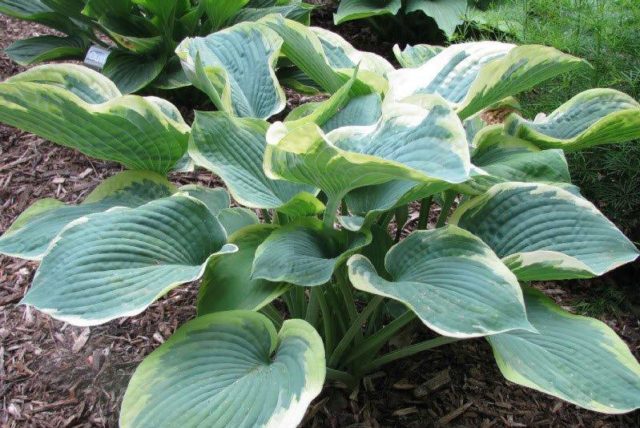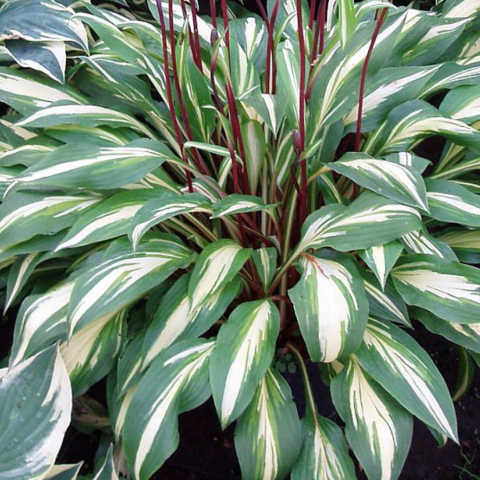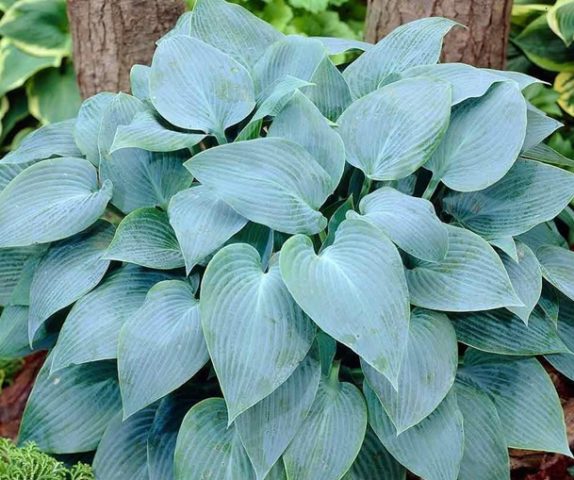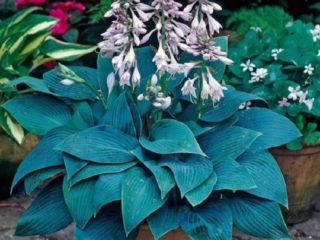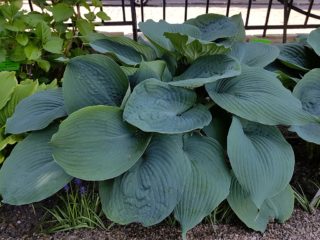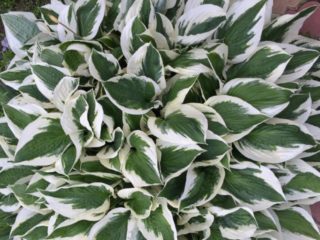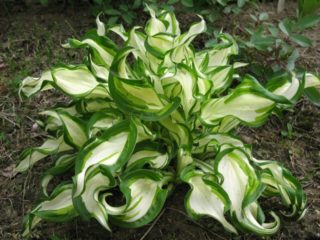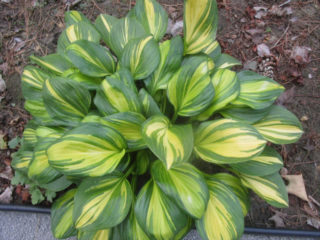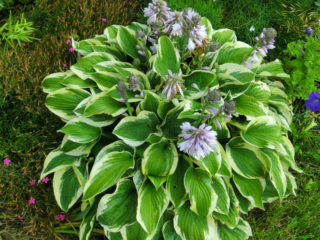Content
Planting and caring for the host is carried out according to simple rules: the plant is unpretentious and takes root successfully even on scarce soils. The bush quickly takes root and begins to grow actively already in the first season after planting.
Secrets of growing hosts in the open field
Hosta (funkiya) is a perennial shrub plant, characterized by winter hardiness and unpretentiousness, which allows it to be successfully grown in all regions of Russia. As a rule, even novice amateurs manage to get a beautiful, healthy bush.
However, experienced gardeners recommend remembering the basic rules for caring for functions:
- Hosts love shade, but excessive shading is undesirable: it all depends on the characteristics of a particular strain.
- Funkii are unpretentious, but very responsive to both watering and feeding.
- Bushes love light, loose soil, so it is periodically recommended to loosen it.
- Strongly overgrown specimens at the age of 4-5 years must be dug up and divided, planting the children at the same depth as the mother plant.
- Pruning for the winter is not necessary. The bushes tolerate frost well even in the open field, but in some regions it is advisable to lay mulch and also cover it with agrofibre.
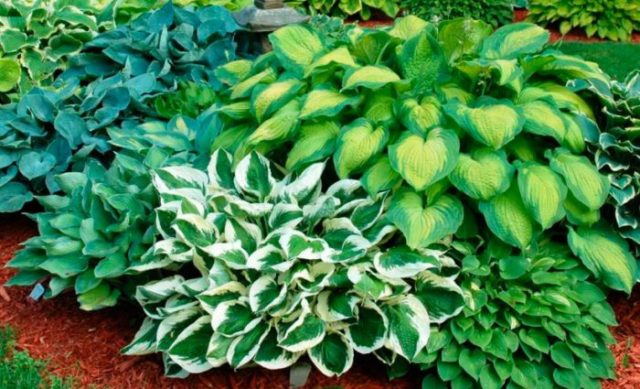
Hosta perfectly decorates the garden and does not require special maintenance
What kind of soil does the hosta like?
The hosts do not have specific soil requirements. She prefers moderately fertile, light loam. The only important point is that the soil should not be waterlogged. Therefore, it is recommended to plant the host in open ground only on a hill. If groundwater lies close to the surface, drainage (expanded clay, small fragments of brick, pebbles and other stones) must be laid in the planting pit.
How fast is the host growing
The growth rate of hosts in the open field depends on the specific cultivar, i.e. precisely from genetic factors, and not from the conditions of care. This is an unpretentious plant that does not need strong lighting and will calmly survive even the absence of regular feeding.
According to summer residents, even in one year you can get a fairly tall hosta bush if you spend 2-3 top dressing per season and monitor other conditions (watering, loosening the earth, growing in the shade). The bush grows for 15-20 years, but the older it gets, the slower the growth rate.
When to plant a host in open ground
There are two main terms - the host can be planted in spring or autumn. The timing depends on the particular variety and on the climatic conditions of the particular region.
In the spring
Planting hosts in open ground is most often done, since over the summer the plant will have time to take root, which will give it the opportunity to successfully overwinter. You can plant from the end of April to the last decade of May, and you need to be guided by the weather forecast.It is necessary that there is no threat of return frosts, i.e. the temperature on the soil did not drop below 4-5 degrees Celsius.
In autumn
Autumn planting in open ground begins at the end of summer: the optimal time for most areas is from late August to mid-September. In this case, it is important that the host has time to take root and take root in a new place. Those. at least 3-4 weeks should pass before the onset of the first frost on the soil.
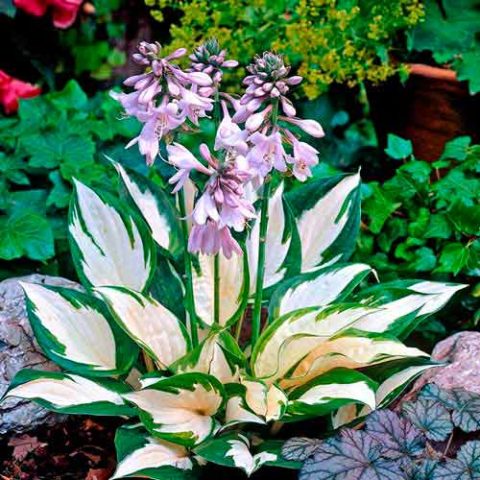
The optimal time for planting hosts in open ground: late April - early May
In the regions
Planting times vary in different climatic zones. It is necessary to adhere to the following recommendations:
- In spring, hosta can be planted in the middle lane in early May, in Siberia and the Urals - in the second half of the month, in the south - at the end of April.
- In autumn, planting in the middle lane is permitted in early September, in the south - at the end of the month, in Siberia and the Urals - at the end of August.
How to plant a host in open ground
When planting hosts, it is important to determine the place and distance between adjacent bushes. The rest of the rules are standard - you need to dig up the area, form holes and apply fertilizer.
Where to plant the host in the country or in the garden
When choosing a place, special attention is paid to the following factors:
- Funkii do not like bright sun, so it is extremely important for them to stay in the shade of larger plants, trees, shrubs and buildings.
- If possible, the site should be protected from strong winds.
- It is also undesirable to plant hosts in lowlands, where a lot of moisture accumulates, especially after rains.
Preparing the soil for planting hosts
You can plant the hosta in open ground in spring or autumn, for this you need to prepare the soil. The site is pre-cleaned and dug up. If the soil is depleted, a complex mineral fertilizer is introduced in advance (this can be done in the fall). If the soil contains a lot of sand and clay, it is better to separately purchase planting soil and fill it in the hole when planting. Can be mixed with wood ash or superphosphates and potassium salt.
Distance between hosts when landing
The distance directly depends on the diameter of the future bush, which should be indicated in the description of the variety:
- Low-growing hosts are planted in open ground at a distance of 30-40 cm.
- Medium height - 40-60 cm.
- Tall - 60-90 cm and even up to 1 meter.
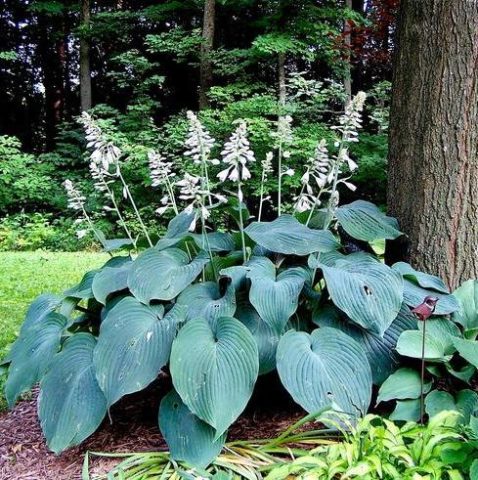
Funkias are often planted under trees, in the most shaded place.
How deep to plant the host
Planting depth in open ground also depends on the size of the plant:
- The root collar of large specimens is buried 4-5 cm.
- In medium-sized hosts - by 2-3 cm.
- In dwarfs, they are deepened to a minimum mark - up to 1-2 cm.
How to land the host
In order for the seedlings to take over and delight in lush greenery, it is necessary to adhere to some requirements. The open ground planting technology is simple:
- The holes are formed with a shallow depth of 30 cm and an average diameter of 60-70 cm.
- If necessary, drain the bottom with small stones.
- Fertile soil is mixed with 2-3 pinches of wood ash or a mixture of superphosphate and potassium salt (20-30 g per well).
- They are planted to the host.
- Lay the soil and watered abundantly.
- On top you can put a layer of mulch - peat, hay, straw.
How to take care of your host
Hosta is one of the most undemanding perennial shrubs. The plant takes root even on not very fertile soil.It is advisable to follow at least the minimum care rules.
Watering and feeding schedule
Hosts are responsive to regular watering as they naturally grow in areas with excessive moisture. Therefore, if the weather is dry, you need to organize weekly watering. The volume depends on the size of the bush - 2-3 buckets of water are given for large ones, 10 liters for dwarf ones. You need to water at the root, otherwise the leaves may burn.
They feed the host in the open field 3-4 times per season:
- In the spring, in April, they give humus or nitrogen fertilizer.
- In June, 2 times (with an interval of 1 month) are fed with a mixture of superphosphates and potassium salt.
- At the end of August, they give a similar composition or a special agent, for example, Fertika Autumn, Ogorodnik Autumn.
Compliance with the rules of planting and care allows you to get a lush street host with beautiful flowers and rich greenery (pictured).
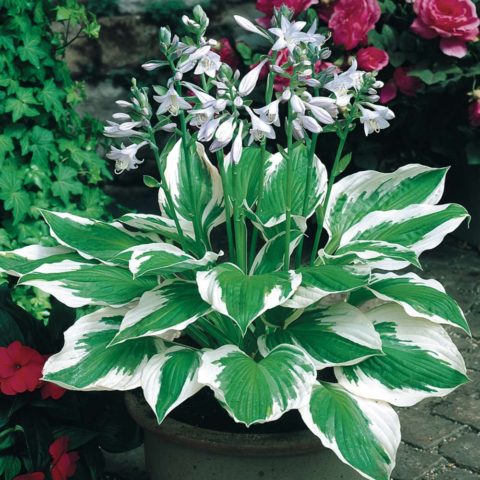
You can grow a beautiful host in almost all regions of Russia
Loosening, mulching the soil
It is necessary to loosen the soil 3-4 times per season, i.e. monthly. It is especially important to do this after top dressing, then nutrients will quickly get to the roots and to all plant tissues. The soil is loosened to a shallow depth using a small spatula or fork.
It is advisable to mulch the soil with organic matter, for example, peat, humus or compost. You can also add a layer of old straw or sawdust. It is advisable to do this immediately after planting the funkii in open ground, then the soil will store moisture longer, and plant care will become easier.
Pruning rules
Whether or not to prune the host for the winter, each gardener decides on his own. In many regions, the function hibernates in the open field with its foliage, in others it is cut almost to the root - this is left to the discretion of the summer resident.
At the same time, pruning of the hosta is very desirable in the spring: it is necessary to remove all old leaves and shoots in order to stimulate the growth of new greenery. Also, be sure to remove the peduncles so that the plant does not waste energy on the formation of extra seeds.
Preparing for winter
Many hosta varieties are winter-hardy, so they calmly survive the cold period in the open field, even without additional shelter. But in regions with extreme winters, it is advisable to take care of the plant:
- At the end of summer, all wilting peduncles are removed (almost at the root).
- All old, damaged leaves are removed.
- Roots are mulched with peat, hay or needles.
- If the bush is young, and winters are usually harsh, it is advisable to cover it with agrofibre. But it is better to remove it right away in March - otherwise the host will be overwhelmed.

Thanks to the regular introduction of nutrients, the bush will become attractive.
Possible problems when growing hosts
Most of the problems that arise when growing hosts in the garden are associated with flower care:
- If the function does not bloom, then there is too much shade in the place of growth or the bush is very thick. Then you need to split it. Another reason is that the variety is late, for example, in Siberia, some hosts cannot wait to bloom in the open field.
- The foliage dries up, perhaps spraying is carried out on hot days, with the drops falling on the leaves. Leaves can dry out with insufficient watering.
- Rusty spots appeared on the host - very weak watering. It is necessary to increase the volume of water, as well as transplant the bush to a more shaded place.
Why does the host grow poorly?
The host can develop poorly due to various factors. The main reasons for this phenomenon:
- After transplanting or moving to another region, the host will grow very slowly at first. It is recommended to loosen the soil more often and apply nitrogen fertilizer (only for spring planting).
- If the hosta was grown as seedlings and planted in open ground quite late (for example, in April), this can also be the reason for the delay in development.Already in the second half of summer, the bush will begin to grow normally, and, again, fertilizers need to be applied to the ground (immediately after transplanting - nitrogen).
- If the bush has been growing for a long time, but now it has begun to develop more slowly, this may be due to insufficient watering.
Features of planting and caring for the host in the regions
The timing of planting, shelter for the winter and other features of care largely depend on the region. Conventionally, the territory of Russia can be divided into 3 climatic zones - the Moscow region, the Urals and Siberia.
In outskirts of Moscow
In the suburbs of Moscow, in open ground, almost all host species take root. The most popular varieties for this region:
- Patriot;
- Podorozhnikov;
- Marginata;
- Fortune;
- Narrow-leaved;
- Wavy and many others.
You can transplant the plant into open ground at the beginning of May. If a dry summer is established, watering is given weekly for 1-3 buckets of water per bush, depending on the size of the funky. For the winter, it is enough just to mulch the roots with sawdust, peat or fallen leaves. Trimming and covering with agrofibre is optional.

Hosts in the open field can be grown in the middle lane, in the Urals, Siberia and other regions.
In the Urals
For growing outdoors in the Ural region, several host varieties are suitable, for example:
- Blue Mouse Ears
- Guacamole (Guacamole);
- June and others.
The ideal soil option is considered to be light loam with a neutral reaction of the environment. But if this is not the case, fertile soil based on sod land, compost and humus can be embedded in the planting hole (ratio 2: 1: 1).
Since the Urals often have hot summers (as well as in Siberia), it is necessary to be especially careful about watering the hosts in the open field. If drought is established, water is given at least once a week. The soil is mulched to prevent drying out. Preparation for winter is standard - a layer of mulch is laid, young seedlings can be covered with agrofibre.
In Siberia
For cultivation in open ground in Siberia, frost-resistant host varieties are chosen, for example:
- Abiqua Drinking Gourd
- Gold Standart;
- American Halo;
- Cherry Berry (Cherry Berry);
- Canadian Blue.
It is recommended to plant it in the spring, and not in the fall, because over the summer the bushes have time to take root well. In August and September, all wilted flower stalks must be removed. The land is watered abundantly to prepare the plant for the winter period. To do this, you also need to mulch the near-trunk circle with peat, needles, dry foliage or other available material. It is advisable to additionally cover young plants with agrofibre.
Diseases and pests
Hosts are not very often affected by pests and diseases, but when grown outdoors, the risks increase. The bushes can parasitize:
- deciduous nematodes;
- different types of beetles;
- caterpillars;
- snails.
As a preventive measure, it is necessary to periodically inspect the bushes of the hosts, and if there are pests, immediately treat it with any insecticide (Aktara, Decis, Confidor). If an infestation of slugs is observed, crushed eggshells can be poured next to the flower garden.
Among the diseases, the most dangerous are the Hosta X host virus and fungal infections:
- anthracnose;
- rust;
- rot of the root collar;
- gray rot;
- phyllostictosis and others.
It is difficult or even impossible to treat these diseases. Therefore, it is better to engage in prophylaxis - not to overmoisten the soil, and also to process the hosta bushes immediately after transplanting into open ground. For this, fungicides are used (Fitosporin, Bordeaux liquid, Skor, Topaz and others.

Damaged plant parts must be trimmed and burned.
Conclusion
Planting and caring for the hosta is quite simple, since the function is one of the most picky plants. When planting, you need to carefully choose a place and feed the bushes well. Then they will grow rapidly, and soon they will decorate the garden not only with attractive greenery, but also with graceful flowers.
